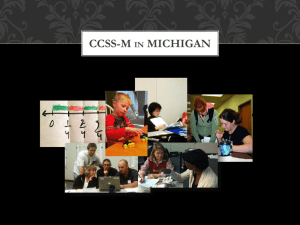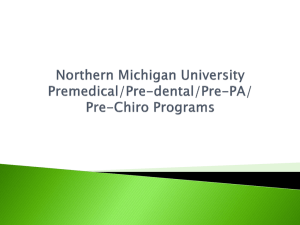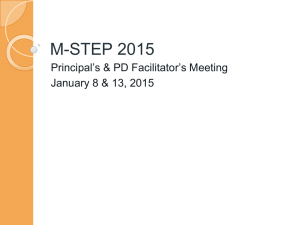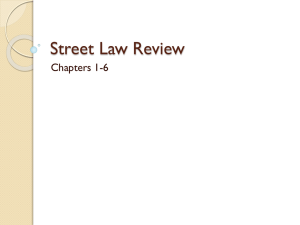M-STEP Power Point
advertisement
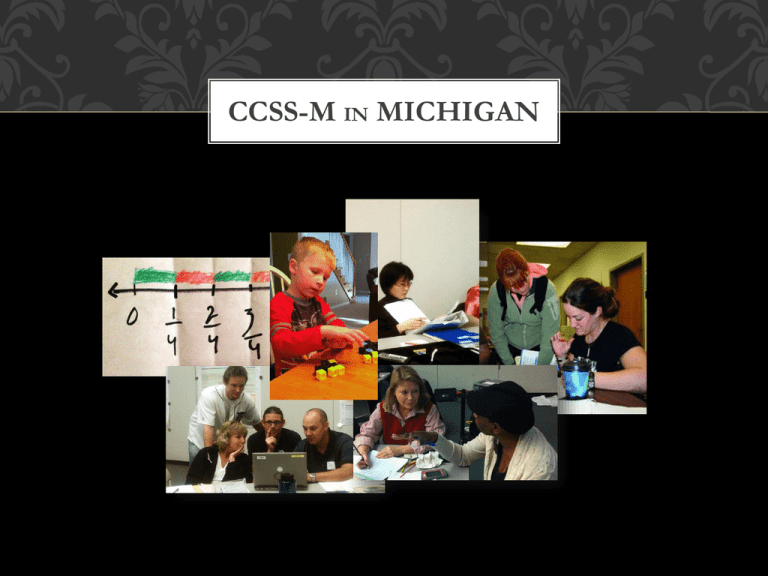
CCSS-M IN MICHIGAN CCSS-M IN MICHIGAN Michigan K-12 Standards CCSS-M with Michigan “Welcome” CCSS-M IN MICHIGAN MDE NEWS RELEASE NOVEMBER 13, 2014 ASSESSMENT TRANSITION MEAP TO M-STEP The new assessment was required by the state legislature for the Spring 2015 testing period. The legislature also required the Department of Education to re-bid its long-term assessment system that will begin in the Spring of 2016. ASSESSMENT TRANSITION The new assessment meets all of the requirements put into law by the legislature; that it be: • an online assessment, with a paper-and-pencil option; • aligned to the state standards; • expanding writing assessments to additional grades; • providing an increased number of constructed response test questions so that pupils can demonstrate higher-order skills, such as problem solving and communicating reasoning; and • pilot tested before statewide implementation . ASSESSMENT TRANSITION The Spring 2015 assessment will include Michigan-created content*, as well as content developed by the multi-state Smarter Balanced Assessment Consortium. Educators from Michigan public schools helped develop and write test content that will appear on M-STEP. * Michigan content will not be included in student scores this year. ASSESSMENT TRANSITION M-STEP includes the following assessments: • A Spring summative assessment for grades 3-8 • A Michigan Merit Exam (MME) for grade 11, which includes a college entrance exam; a work skills component; and a summative component aligned to Michigan content standards ASSESSMENT TRANSITION MDE will be working with the USED to update Michigan’s school accountability model used in its flexibility waiver to the federal No Child Left Behind Act. In these discussions with USED, it will be the Michigan Department of Education’s intent to use the test data from this transitional year for a trial run of a revised accountability system. It is the intent of the Department that the results of the trial run of accountability would be shared with schools and districts for local decision making, but that no consequences would be applied. M-STEP COMPONENTS The test is comprised of a: • Computer Adaptive Test (CAT), • Classroom Activity, and a • Performance Task (PT). M-STEP COMPONENTS The purpose of the Classroom Activity is to introduce students to the vocabulary and the context of the Performance Task to follow. The Classroom Activity: • is a 30-minute scripted lesson presented to the students; • should be administered as close as possible, but no more than 3 days prior to the administration of the Performance Task (PT); • may occur on the same day as the PT; and • is delivered in class by the teacher, not online. M-STEP COMPONENTS The Performance Task (PT) is a multi-item task administered online. Within this PT students are presented with several stimuli. They will respond to a combination of: • Technology Enhanced (TE) items, • short Constructed Response (CR), and • extended CR items. Administering the PT without first administering the Classroom Activity is considered a testing irregularity. M-STEP COMPONENTS A “note” about the Performance Task in grade 11... Performance Tasks (and their accompanying classroom activities) are recommended but not required for students in grade 11, as state law prohibits the requirement of more than one extendedresponse item on the Michigan Merit Examination. However, because a single extended-response item is likely insufficient to achieve alignment to Michigan’s high school standards, it is unclear whether the U.S. Department of Education will allow results without Performance Tasks to count for accountability. M-STEP SPRING 15 PREVIEW* *Grade level specific items to be released in early 2015 https://wbte.drcedirect.com/MI/portals/mi/ott1 LINE GUIDE TOOL STICKY NOTE TOOL STICKY NOTE TOOL 10 HIGHLIGHT TOOL WHAT DO YOU NOTICE? SPOTLIGHT ON ASSESSMENT December 4, 2014 Spotlight STUDENT GROWTH Shift from: Performance Level Change (PLC) to Student Growth Percentiles (SGPs) Student Growth Percentiles (SGPs): • help students, parents, and educators determine if a student’s learning is above, near, or below the average of their comparison group; • are not about how high or low the student’s current score is but rather how much learning a student has shown since the prior test. Critical difference between PLC and SGPs… Even students with very low test scores can demonstrate high levels of learning over time. CCSS-M COMMUNICATION RESOURCES PREPARE FOR MORE REALISTIC TEST RESULTS Larson, M., & Leinwand, S. (2013). Prepare for More Realistic Test Results. The Mathematics Teacher, 106(9), 656-659. BE A LEARNING HERO http://www.bealearninghero.org/#intro COMMON CORE MATH – A GRADE-BYGRADE VIEW FOR PARENTS http://pages.uoregon.edu/dps/CommonCore/CCSSM_bygrade.pdf LANGUAGE DOMAINS Listening Speaking Reading Writing ENGLISH LANGUAGE DEVELOPMENT LEVELS QUALITY LEVELED INSTRUCTION QUALITY LEVELED INSTRUCTION

